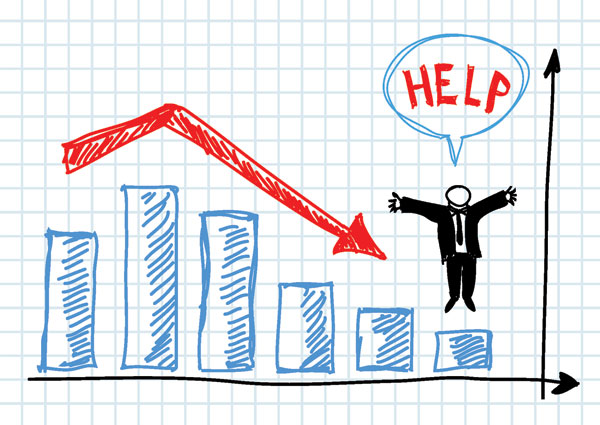How to Use Social Media for Crisis Management
 Crisis (from the Greek word “krisis” – judgment) is an unstable period that has a starting and ending point followed by conditions of high stress that usually occur along with multiple events and possible risks for the organization`s sustainability or reputation. From communication point of view, a crisis can be described by 3 phases: the pre-crisis, the post crisis and the crisis event itself. In this article, we will explain why social media can serve as useful tools during crisis and we’ll attempt to propose a set of “good practices” of social media usage during that period.
Crisis (from the Greek word “krisis” – judgment) is an unstable period that has a starting and ending point followed by conditions of high stress that usually occur along with multiple events and possible risks for the organization`s sustainability or reputation. From communication point of view, a crisis can be described by 3 phases: the pre-crisis, the post crisis and the crisis event itself. In this article, we will explain why social media can serve as useful tools during crisis and we’ll attempt to propose a set of “good practices” of social media usage during that period.
Crisis and Communication Issues
Conventionally, the main problem of most crisis events is the strange behavior of the people involved and the confusion of all internal and external communications. The reason is obvious, people are stressed, journalists are struggling to find and publish information and exclusive news and the management is also receiving tons of messages. All the above can easily be described with one word: chaos.
Social Media is a Changing Environment
Before the introduction of social networks, organizations had the ability to manage the crisis events by having key connections in the media world (journalists). Nevertheless after the introduction of social media things have changed.

Social Media are channels with billions of connected users, who exchange trillions of messages, in a real time communication arena, where a worldwide community interacts in a daily and hourly basis. Communication and socializing were always part of our daily life. Nevertheless nowadays people can contact directly organizations and brands, something that was not possible or easy in the past. If you combine the above with the fact that most social media messages are exchanged in public, you can understand how social media can help or harm brands and organizations in crisis.
Social Media in Crisis
During a crisis, the social media can amplify the communication mainly against the brand or organization. Negative messages coming from unreliable sources can go instantly viral within social networks, generating a harmful publicity and reputation damage. Thus as we described in a previous article about online reputation management, it is important to heavily monitor what users say on social networks and respond. In that previous article we also provided 10 steps that organizations should take at the pre-crisis phase.
Using Social Media during Crisis Event and Post Crisis
Once a reputation management strategy is prepared, it is highly recommended to monitor conversations around your brand, aiming to immediately identify the pre crisis signals. When a crisis event is taking place online the first steps must include:
- Identification of the actual problem and the main source of information
- Request of internal meeting with crucial stakeholders
- Development of the official crisis response
- Rough estimation of the impact of crisis.
There will be cases where the problem can solved locally or even internally but still, it is vital to give reputation monitoring high priority for the next months.

Below we provide 10 good social media practices that can help you during the crisis period:
1. Use Professional Social Media tools
During a crisis event, you need to have all the available tools that can help you monitor the generated chaos. You will need the maximum of each service, so make sure you purchase immediately all the necessary tools that can help you make your job faster and more efficient.
2. Have the content ready
Preparing your responses and all the proper content (images, press release templates, documents with social responsibility actions etc) is a time management practice that will enable you to focus on high priority tasks. Time is crucial during crisis and you can’t afford being slow.
3. Train your social media team
Everyone that is involved in communications inside the organization must know the main position of the company regarding the crisis. Except of the communication team, it is also important to notify the employees who use social media NOT to mention anything about the crisis but instead to forward possible queries to the crisis management team.
4. Be open
Journalists, clients, families, investors, bloggers or simple users will seek information about “what happened”. Don`t hide information; instead share all important data in order to be a reliable and accurate source of news.
5. Use Social Media Ads
Even if social media ads are costly, they can allow you to communicate directly your truth by sending messages to a specific audience.
6. Reputation monitoring
Monitoring what people say about your brand should be added in your daily routine. Search your brand on Google, on forums, on review websites, on blogs and on any online media related to your industry.
7. Find your supporters
Contact your fans and supporters and treat them as special audience. Fans can help you defend your brand!
8. Don`t reply to anonymous offensive users
Some anonymous users will try to be offensive and directly attack to your brand. Keep in mind that those can be competitors or dissatisfied clients. In any case, be kind to them or don`t reply at all. If their messages contain nothing but offensive words, replying is not always worth it.
9. The right information at the right time
Even if the official response is an apology or a denial, during crisis it is a good time to remind people the achievements and the social responsibility policy of the organization.
10. Post Crisis
Maintain the reputation monitoring efforts and continue publishing positive information about the organization. For a reasonable period, the communication efforts should have one objective: to disconnect your brand name from the crisis event.
Don’t forget to share this article on twitter if you like it. Sharing is caring! 🙂

 5 Comments
5 Comments


